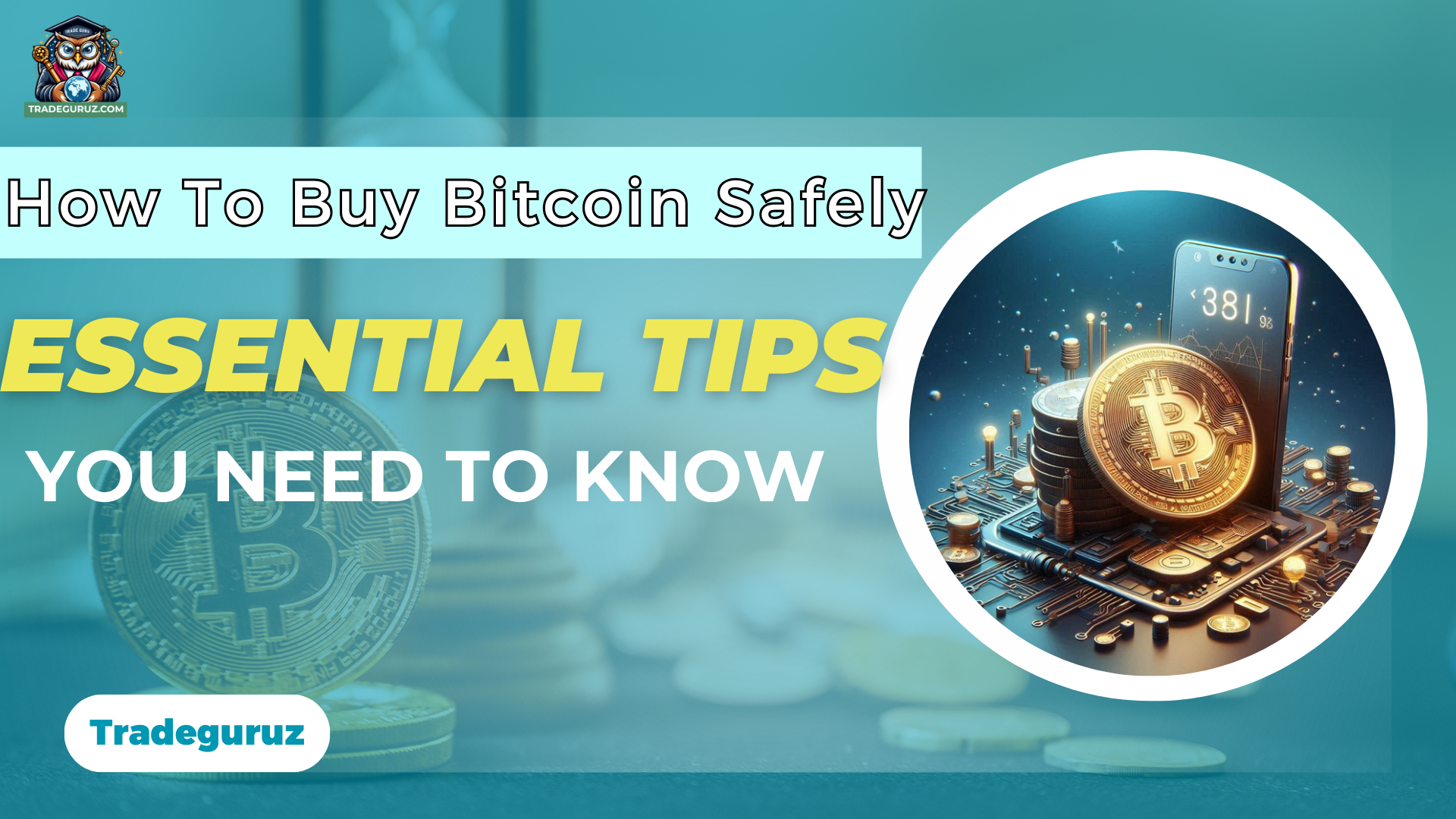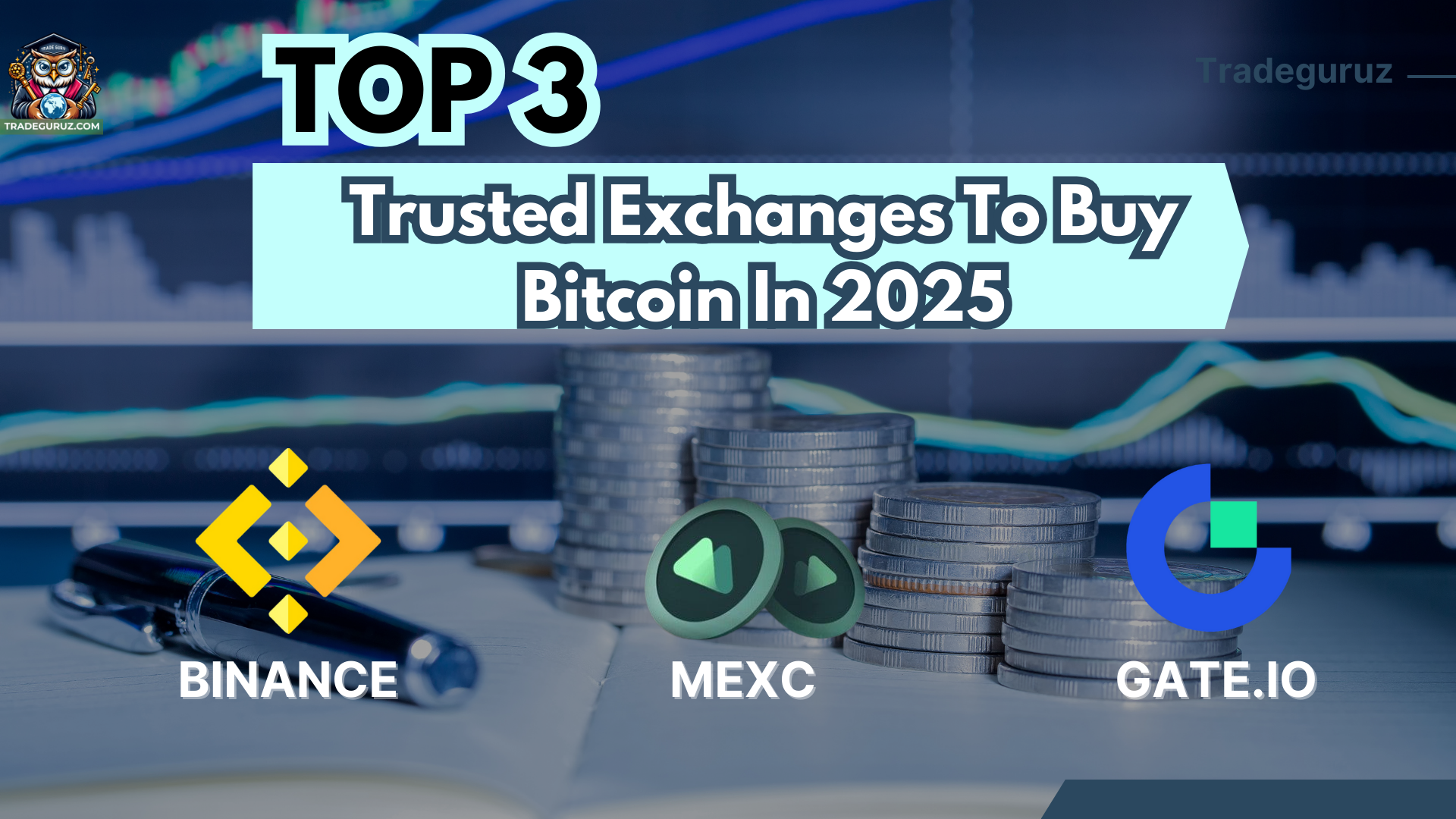



Bitcoin is more than just a digital currency, it is an investment channel that has captured global attention due to its impressive growth potential. However, buying Bitcoin is not as straightforward as purchasing stocks or foreign currency. There are multiple ways to acquire Bitcoin, from cryptocurrency exchanges and ETFs to direct purchases via P2P or Bitcoin ATMs. Each method comes with its own advantages and risks, requiring buyers to research carefully to ensure safety and maximize profits. In this guide, we will guide you on how to buy Bitcoin safely and effectively while highlighting crucial tips to help you avoid potential risks.
Whether you are an experienced investor or a newcomer to the crypto space, Bitcoin is a name that needs no introduction. Launched in 2009 by an anonymous individual or group under the pseudonym Satoshi Nakamoto, Bitcoin was the world’s first cryptocurrency. Unlike fiat currencies controlled by central banks, Bitcoin operates on a decentralized network, utilizing blockchain technology to ensure transparency, security, and immutability.

People buy Bitcoin for various reasons, but generally because they believe in its long-term growth potential. First and foremost, Bitcoin is considered a high-potential investment asset known as "digital gold" due to its limited supply of only 21 million BTC, which makes it immune to inflation. In the current economic climate, Bitcoin is increasingly popular as a safe haven against inflation. Investor confidence is increasingly strengthened as more financial institutions recognize and integrate it into their systems. Beyond its investment appeal, Bitcoin offers a seamless global payment system with low transaction fees and no intermediaries. For some, Bitcoin represents financial freedom due to being free from government or banking control, allowing individuals to fully own and manage their assets without fear of restrictions or account freezes. These combined factors paint an optimistic picture of the future of Bitcoin, making it an attractive option for both individual and institutional investors worldwide.
While seasoned investors may be familiar with buying Bitcoin, beginners often wonder about the best approach. Do not worry; the next section will explore the most common and beginner-friendly methods to buy Bitcoin, ensuring a smooth start for any new investor.
The most common way to buy Bitcoin, especially for beginners, is through cryptocurrency exchanges. These platforms function as a "financial market," allowing you to buy, sell, and trade Bitcoin at real-time market prices. Sign up for an account, verify your identity if required, deposit funds via bank transfer or credit card, and you can start purchasing Bitcoin instantly.
Exchanges deliver high liquidity, enabling easy trading at competitive prices. Many support a wide range of cryptocurrencies, so if you want to trade not only Bitcoin but also other cryptocurrencies to diversify your portfolio, it is not a problem. Major exchanges also integrate analysis tools, price charts, and technical indicators to help investors make informed decisions. But you have to face security risks when trading on exchanges. History has witnessed various attacks on exchanges, leading to users losing all their Bitcoin. Additionally, if an exchange faces financial issues, gets hacked, or is shut down by regulators, you could lose access to your assets.
If you wish to invest in Bitcoin but want to avoid the hassle of storing or managing private keys, Bitcoin ETFs (Exchange-Traded Funds) are a great alternative. These funds track Bitcoin's price and are listed on traditional stock exchanges like Nasdaq or NYSE. Instead of purchasing Bitcoin directly, you can buy shares of a Bitcoin ETF through popular stock trading platforms like eToro, Robinhood, or Interactive Brokers.
Bitcoin ETFs eliminate the security risks associated with holding Bitcoin yourself, as you do not need to worry about storage or losing your wallet keys. Your assets are managed by professional investment funds, protecting you from losses due to personal error or cyberattacks. Additionally, ETFs provide an easy way to gain Bitcoin exposure using familiar stock trading methods, making them appealing to traditional investors. The biggest downside of Bitcoin ETFs is that you do not actually own Bitcoin; you only hold funds representing it. This means you cannot freely withdraw Bitcoin to your wallet, use it for trading, or store it as you want. Furthermore, Bitcoin ETFs often come with annual management fees. While these fees may seem minimal in the short term, they can significantly impact your overall returns over time, especially in a stagnant or declining market.

P2P trading helps investors buy Bitcoin directly from another person without an intermediary like an exchange. You can use platforms such as Binance P2P, Paxful, or LocalBitcoins to connect with buyers and sellers, price agreements, and payments via bank transfers, e-wallets, or even cash. While P2P platforms do not offer the same level of anonymity as decentralized exchanges, they allow users to find the best deals.
The main advantage of P2P trading is its flexibility in payment methods and its independence from centralized exchanges. Various users prefer this method to avoid identity verification requirements or to get better prices than those listed on exchanges. Nevertheless, the risk of fraud is also higher since you are trading directly with strangers. Most P2P platforms deliver rating systems where users can evaluate potential trade partners before making transactions. To stay safe, always buy from reputable sellers, use platforms with escrow services, and never send money before receiving your Bitcoin.
If you are looking for a simple, quick way to buy Bitcoin without signing up for an exchange, Bitcoin ATMs are an interesting option. These machines work similarly to traditional ATMs, enabling you to deposit cash and receive Bitcoin directly into your crypto wallet. The process is straightforward: scan your wallet’s QR code with the ATM scanner, insert money into the machine, and confirm the transaction. Then, Bitcoin will be transferred to the wallet instantly. This method benefits beginners who want to explore crypto without using online exchanges.
While Bitcoin ATMs are convenient, they do not come for free. Transaction fees can range from 7% to 20% per transaction, far higher than the fees charged by online exchanges. Additionally, Bitcoin ATMs are still relatively limited in multiple regions, meaning you may have difficulty finding one near you. If you opt for this method, check sites like coinatmradar.com to locate the nearest Bitcoin ATM.
Each Bitcoin purchasing method has its own pros and cons, and the best choice depends on your investment goals, crypto knowledge, and risk tolerance. Buying through cryptocurrency exchanges remains the most widely used option for both beginners and professional traders. If you wish to buy Bitcoin without security concerns, Bitcoin ETFs are an ideal choice. For those prioritizing quick and flexible transactions without intermediaries, P2P trading and Bitcoin ATMs are worth options. But no matter how you buy Bitcoin, the most important thing is to do your own research to avoid unnecessary risks.

After purchasing Bitcoin, never leave your entire balance on an exchange, as hacks or technical failures could result in total loss. The safest approach is to withdraw your Bitcoin to a crypto wallet, preferably a hardware wallet like Ledger or Trezor. These cold wallets store your assets offline, making them highly secure against cyberattacks. If you select to use a hot wallet, ensure you back up your seed phrase and store it securely. Never save it on an internet-connected device or take a screenshot, as this could expose it to hackers.
Regardless of how you purchase Bitcoin, self-protection is key. It is crucial to activate security measures when trading Bitcoin. The first step is enabling two-factor authentication (2FA) on your exchange account. This prevents unauthorized access, as even if someone obtains your password, they cannot log in without the verification code. Additionally, always keep your passwords and login credentials confidential. Never shared it with anyone, even with people claiming to be the exchange's support staff. A good rule of thumb: if someone asks for your login details or seed phrase, it is a scam. Scammers constantly develop highly varied tricks, you need to be alert to their sophisticated tricks to protect yourself.
When buying Bitcoins through a Bitcoin ATM, you must enter your wallet address to receive the funds. Most ATMs allow you to scan a QR code from your wallet to input the address automatically; however, you must be extremely cautious at this stage. If you enter the wrong address, your Bitcoin could be sent to another wallet, and recovery is impossible. Never copy and paste wallet addresses from your clipboard to prevent malware from changing the address. If the ATM requires a cash deposit, double-check the amount and confirm that the transaction has been completed before leaving. After receiving Bitcoin, check your wallet balance immediately to verify a successful transfer.
If you purchase Bitcoin through an exchange, choose reputable platforms with high liquidity and strong security measures. Well-established exchanges typically have clear regulations, robust market-tracking tools, and risk management features. In contrast, lesser-known platforms that lack transparency or are not supervised by regulatory agencies may pose risks such as fraud or sudden shutdowns without user protection measures. For P2P trading, only transact with highly rated sellers with a solid trade history. Always verify counterparty details and use secure payment methods to avoid scams. When investing in Bitcoin ETFs, opt for funds managed by reputable financial institutions like BlackRock, Grayscale, or Fidelity to ensure transparency and safety. Although Bitcoin ETF investments come with fees, different funds have varying fee structures; compare and select the one with the lowest costs to maximize your returns.
Choosing a reputable exchange is not just about buying and selling Bitcoin safely, it also protects your assets from security risks and fraud. Below are three trusted exchanges to consider for your Bitcoin investment journey.

No stranger to investors, Binance is truly a giant in the crypto market with a comprehensive ecosystem. Binance boasts the highest liquidity in the market, with tens of billions of dollars in daily trading volume, ensuring that you can buy and sell Bitcoin at the closest price to the market. Binance prioritizes user security through its SAFU Fund, which compensates users in case of security incidents. However, the exchange's legal policy is becoming increasingly strict as the exchange begins to face increasing scrutiny from regulators. KYC verification is mandatory to access core features. Without KYC, your account will be limited to basic functions like viewing market prices without the ability to trade.
How to Create a Binance Account: Step-by-Step Registration Guide
If you desire to hunt for opportunities from emerging altcoins but still want a reputable platform to buy Bitcoin, Mexc is a choice worth considering. This exchange owns an extensive token selection, with over 2,000 listed coins and 2,300+ trading pairs, and is often the place to list potential coins early. MEXC emphasizes asset security, maintaining a reserve ratio above 100% to enable users to withdraw funds anytime, even in mass withdrawals. The exchange also operates a $350 million USDT futures insurance fund to cover excessive margin losses, ensuring a secure trading environment. While MEXC offers decent liquidity, Bitcoin trading pairs may not be as liquid as those on Binance due to its focus on altcoins. If you solely want to buy and hold Bitcoin long-term, MEXC may not be the best option. But it is worth a try if you are also interested in altcoins alongside Bitcoin.
How to Create a Mexc Account: Step by Step Guide for Beginners
The third name that cannot be ignored is Gate.io. This is one of the longest-standing crypto platforms and a pioneer in implementing Proof of Reserves using Merkle Tree technology. Users can verify their assets stored in Merkle trees through third-party auditors. According to recent statistics, Gate.io holds $4.3 billion worth of assets with a reserve ratio of 115% for 171 assets. The platform enforces strict security measures, including WAF and DNS security, to prevent external attacks. The exchange implements 2-factor authentication (2FA) and SSL encryption to protect personal data while providing account protection features such as IP lock, email lock, and PIN code. However, Gate.io’s interface can be complex, making it challenging for beginners. If you are an experienced trader prioritizing security, this exchange is a strong contender for Bitcoin purchases.
How to Create a Gate io Account A Simple Registration Guide
Hopefully, this article has helped you understand how to buy Bitcoin safely and effectively. Whether you choose a crypto exchange, Bitcoin ETFs, P2P trading, or Bitcoin ATMs, it is essential to understand how each method works to select the one that best suits your needs. Use reputable platforms and implement strong security measures to protect your assets. Stay informed about market trends, follow security best practices, and think carefully before making investment decisions to succeed on this journey.
Thank you for spending your time reading this article.
For more information, please contact us at TRADEGURUZ.